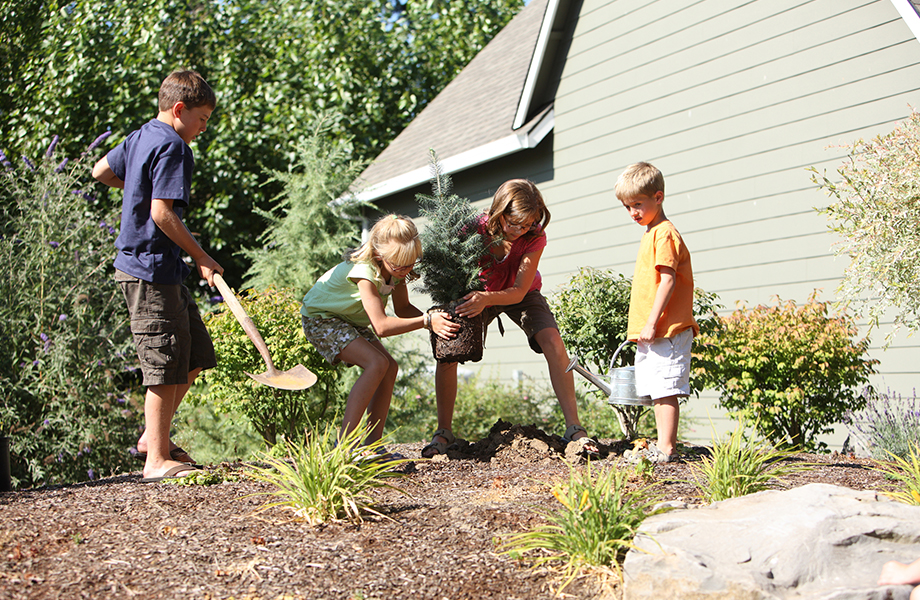Not only does landscaping add curb appeal, it can also improve your home’s comfort and lower your energy bills throughout the year.

Plant deciduous trees
In the summer, large deciduous trees on the south and west sides of your home will cast welcome shade. In the winter, the deciduous trees will lose their leaves and allow for the sun’s rays to provide radiant heat in your home.
Block the wind with evergreens
Densely placed evergreens or bushes can provide an excellent windbreak during the cold winter months when planted on the north or northwest side of your house. For maximum windbreak, plant a combination of trees, bushes and shrubs together to block the wind from down on the ground all the way to the tops of the trees.
Protect your windows
Window awnings keep the summer sun from pouring in through the windows, which can minimize solar heat gain on west-facing windows. When they are water repellent and treated to resist mildew and fading, they’re easy to maintain. Also, consider using adjustable or retractable awnings so you can roll them up in the winter to let the sun warm your house.
Garden with groundcover
The temperature below groundcover plants or turf is much cooler than below heat-absorbent or reflective material, such as asphalt or gravel. Use groundcover when possible to reduce heat from the sun and cool the air around your home.
Save with motion sensors
Motion sensors automatically turn outdoor lights on when they detect motion and turn them off a short while later, so that you’re not using lights when you don’t need them. To make your lights even more energy efficient, replace the bulbs with ENERGY STAR® certified LEDs to minimize your energy use.
Maximize your patio
If your porch, deck, or patio is in direct sunlight so you feel that blazing afternoon heat, build a trellis and plant climbing vines to shade the patio area and still let the breeze through.
Now that the outside of your home is energy efficient, see how you can save energy inside your home!



